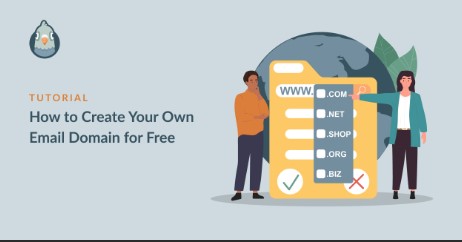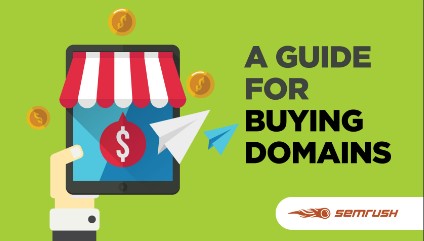Buy Business Domain And Email
In today’s digital era, the importance of a professional online presence cannot be overstated. A well-crafted online persona not only establishes credibility but also serves as the digital face of your business.
Whether you’re a budding entrepreneur or a seasoned business owner, having a business domain and a professional email address is crucial in elevating your brand.
A business domain acts as your online address, a place where customers and clients can find you easily. Meanwhile, a branded business email adds a layer of professionalism and trustworthiness, distinguishing your communications from the clutter of generic email addresses.
Together, these elements form the foundation of your online identity, making it easier for your audience to connect with you and for you to stand out in a crowded marketplace.
Choosing the Perfect Business Domain
Brainstorming Memorable and Relevant Domain Names
The journey to establishing a powerful online presence begins with selecting the perfect domain name. This name should be memorable, easy to spell, and relevant to your business.
It’s your digital storefront, so think creatively. Short, punchy names are often the best, but ensure they reflect your brand’s identity and the nature of your business. Consider using keywords that align with your industry to improve search engine visibility.
Domain Extensions: .com, .net, .biz, and Beyond
Once you have a list of potential names, it’s time to consider domain extensions. While .com is the gold standard due to its familiarity and trust, don’t overlook other options like .net, .biz, or even newer, industry-specific extensions like.
tech or .store. These alternatives can sometimes offer more availability and might resonate more directly with your target audience.
Checking Domain Availability and Avoiding Trademark Issues
Before you get too attached to a particular domain name, check its availability using a domain search tool. Ensure that your chosen name doesn’t infringe on any trademarks, which could lead to legal issues down the line. A thorough check helps avoid future conflicts and ensures your domain is uniquely yours.
Tips for Securing Your Ideal Domain Name
Act quickly once you’ve settled on a domain name. Domains can be snapped up rapidly, so securing your ideal name promptly is key.
Consider registering variations and common misspellings of your domain to protect your brand further. This foresight prevents competitors from capitalizing on potential customer missteps.
Registering Your Business Domain
Selecting a Reputable Domain Registrar
Choosing a reputable domain registrar is crucial. Look for registrars with a solid reputation, good customer service, and transparent pricing.
Popular options include GoDaddy, Namecheap, and Bluehost. They often provide additional services like web hosting, which can be convenient.
Step-by-Step Guide to Domain Registration
Registering your domain involves a straightforward process. First, search for your desired domain name on the registrar’s website.
If available, you’ll add it to your cart, fill out your contact information, and choose your registration period—typically from one to ten years. Finally, you’ll complete the purchase and set up your domain.
Understanding Domain Privacy and Protection
Consider opting for domain privacy protection. This service shields your personal information from the public WHOIS database, reducing spam and protecting you from potential identity theft. It’s a small investment that offers significant peace of mind.
Cost Considerations and Renewal Strategies
Domain registration costs can vary, so compare prices across different registrars. Also, be aware of renewal fees and set your domain to auto-renew to avoid accidentally losing it. Some registrars offer discounts for multi-year registrations, which can be a cost-effective strategy.
Setting Up a Professional Business Email
The Advantages of a Branded Business Email
A branded business email address (e.g., yourname@yourbusiness.com) conveys professionalism and builds trust with your clients. It’s more memorable and credible than generic addresses and helps reinforce your brand identity in every communication.
Choosing the Right Email Hosting Service
When selecting an email hosting service, compare providers based on features, reliability, and customer support. Google Workspace (formerly G Suite) and Microsoft 365 are popular choices, offering robust features like shared calendars, cloud storage, and collaboration tools.
Comparing Email Hosting Providers
Evaluate providers based on storage limits, security features, ease of use, and integration with other tools you use. Consider factors like spam filtering, uptime guarantees, and customer reviews to make an informed decision.
Features to Look For in an Email Hosting Service
Look for essential features like large storage capacities, powerful spam filters, strong security protocols (including SSL encryption), and user-friendly interfaces. Advanced features like mobile access, integrated calendars, and collaboration tools can also be beneficial.
Step-by-Step Guide to Setting Up Your Business Email
Setting up your business email typically involves creating email accounts through your hosting provider’s dashboard.
You’ll configure settings like spam filters and forwarding options. Next, set up your email client (such as Outlook or Gmail) with the necessary IMAP/POP and SMTP settings provided by your host. Test the configuration to ensure everything works smoothly.
Enhancing Your Online Presence
Integrating Your Business Domain with a Website
Having a domain is just the first step; integrating it with a professional website takes your online presence to the next level. Choose a website builder or CMS (Content Management System) that suits your needs. WordPress, Wix, and Squarespace are popular options that offer ease of use and flexibility.
Choosing a Website Builder or CMS
Your choice of a website builder or CMS should be guided by your technical expertise and business requirements. WordPress offers extensive customization and scalability, while platforms like Wix and Squarespace provide intuitive drag-and-drop interfaces for quicker setup.
Designing a Professional and User-Friendly Website
A well-designed website should be visually appealing, easy to navigate, and optimized for both desktop and mobile devices. Focus on a clean layout, high-quality images, and clear calls to action. Ensure your content is engaging and provides value to your visitors.
Using Your Business Email for Effective Communication
Effective communication is key to building relationships with your clients. Use your business email to maintain a professional tone, respond promptly, and provide clear, concise information.
Best Practices for Email Etiquette and Security
Adhere to email etiquette by using appropriate salutations, keeping messages concise, and avoiding slang. Ensure your email security by using strong passwords, enabling two-factor authentication, and regularly updating your security protocols.
Leveraging Email Marketing to Grow Your Business
Email marketing can be a powerful tool for growth. Use your business email to send newsletters, promotional offers, and updates to your subscribers. Segment your audience for targeted campaigns and track metrics to refine your strategy.
Troubleshooting and Maintenance
Common Issues with Domains and Emails and How to Solve Them
Even with the best setup, issues can arise. Common problems include email deliverability issues, domain expiration, and DNS configuration errors. Keep troubleshooting guides handy and seek support from your registrar or hosting provider when needed.
Keeping Your Domain and Email Secure
Regularly update your passwords, enable two-factor authentication, and monitor your accounts for suspicious activity. Use reputable antivirus software and educate your team on recognizing phishing attempts.
Regular Maintenance and Monitoring Tips
Conduct regular audits of your domain and email settings to ensure everything is functioning optimally. Monitor performance metrics and update your website and email settings as necessary to keep up with evolving security standards and business needs.
Conclusion
Recap of the Steps to Buy a Business Domain and Email
Securing a business domain and setting up a professional email address are foundational steps in establishing your online presence. From brainstorming the perfect domain name to registering it and setting up your email, each step is crucial in building credibility and trust.
Final Tips for Sustaining a Professional Online Presence
To sustain a professional online presence, continuously engage with your audience, keep your website and email secure, and stay updated with the latest digital trends. Regularly refresh your content, monitor your performance, and adapt to new technologies to ensure your business remains relevant and competitive in the digital landscape.





